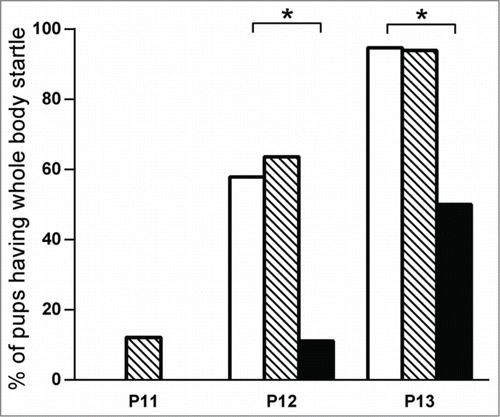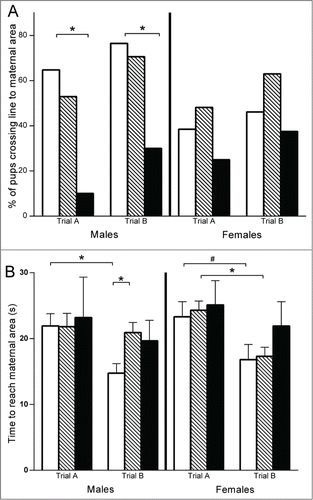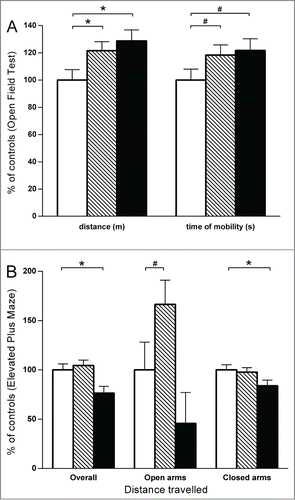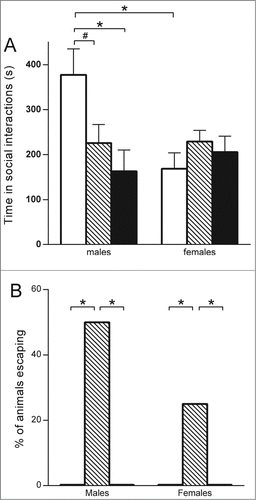Figures & data
Table 1. Summary of developmental indicators
Figure 1. Auditory startle reflex test performed at P11 to P13. Negative control group (in white) n = 19; exposed to endocrine disruptors group (striped) n = 33; positive control (VPA) group for autistic features (in black) n = 18. * P < 0.01.

Figure 2. Nest-seeking behavior test performed at PND8. * P < 0.01; # P < 0.1. (A) Percentage of pups crossing the line toward maternal area with the head and the forepaws in males (left) and females (right): negative control group (in white) n = 30; exposed to endocrine disruptors group (striped) n = 44; positive control (VPA) group for autistic features (in black) n = 18. (B) Time spent to reach maternal area for successful pups: males (left) and females (right): negative control group (in white) n = 24; exposed to endocrine disruptors group (striped) n = 32; positive control (VPA) group for autistic features (in black) n = 8.

Figure 3. Open Field (A) and Elevated Plus Maze (B). Negative control group (in white) n = 20; exposed to endocrine disruptors group (striped) n = 28; positive control (VPA) group for autistic features (in black) n = 18. * P < 0.01; # P < 0.1. (A) Results expressed as a percentage of control for distance traveled and time of mobility in open field test performed at P20. All statistical tests were performed on raw data, and data were transformed to percent of controls for the figures. (B) Results expressed as a percentage of control for distance traveled (overall, in open arms, and in closed arms) in elevated plus maze test performed at P25.

Figure 4. Social interaction test performed at P40. * P < 0.01; # P < 0.1. (A) Mean time spent in social interactions (active playing, pursuing, and sniffing and grooming each other), in males (left) (control n = 4; exposed to endocrine disruptors n = 8; positive control (VPA) group n = 6) and in females (right) (control n = 4; exposed to endocrine disruptors n = 8; positive control (VPA) group n = 6). (B) Escaping behavior specific to rats exposed to endocrine disruptors (striped, n = 8 males and 8 females), no rats in the negative control group (in white, n = 4 males and 4 females) nor in the positive control (VPA) group (n = 6 males and 6 females) demonstrated this behavior.

Table 2. Summary of behavioral testing results: Comparison between groups exposed to endocrine disruptors and valproic acid
